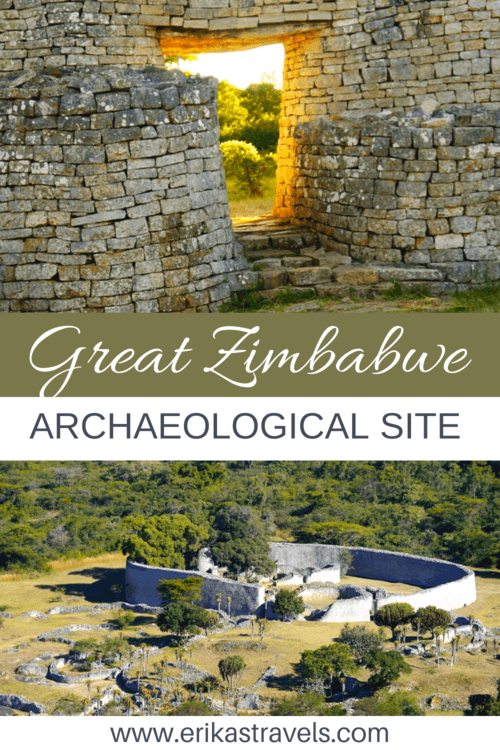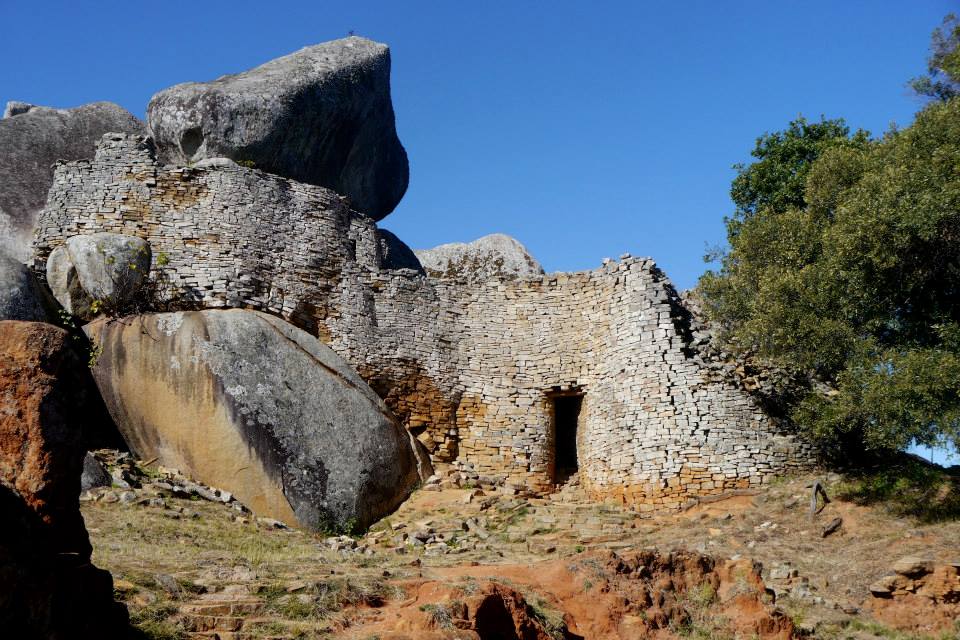
Great Zimbabwe Ruins: The House of Stones
In 1871, German geologist Karl Mauch set off in search of the biblical city of Ophir—a place that once supplied the Queen of Sheba with an abundance of gold for the construction of the Temple of Solomon. And when he stumbled upon the ancient stone structure of Great Zimbabwe in the beautiful, green highlands south of Harare, he believed that he had at last stumbled upon the fabled city.
Great Zimbabwe is one of Africa’s most incredible archeological sites. Yet—even amongst avid travelers—the ruins remain largely undiscovered. The wonderfully preserved Bantu ruins provide evidence that ancient Africa reached a level of civilization not suspected by earlier scholars. The ruins are truly a forgotten marvel of Zimbabwe and a wonder of Africa.
They are the most impressive archeological site south of the Nubian pyramids, and sub-Saharan Africa’s most awe-inspiring archaeological relic.
THE GREAT ZIMBABWE ARCHAEOLOGICAL SITE
Great Zimbabwe National Monument lies approximately 30 km from Masvingo, in a sparsely populated Bantu region of Zimbabwe’s lowveld. The complex dates—built between the 12th and 15th centuries—extends over almost 800 hectares and is divided into three groups: the Hill Ruins, the Great Enclosure and the Valley Ruins.
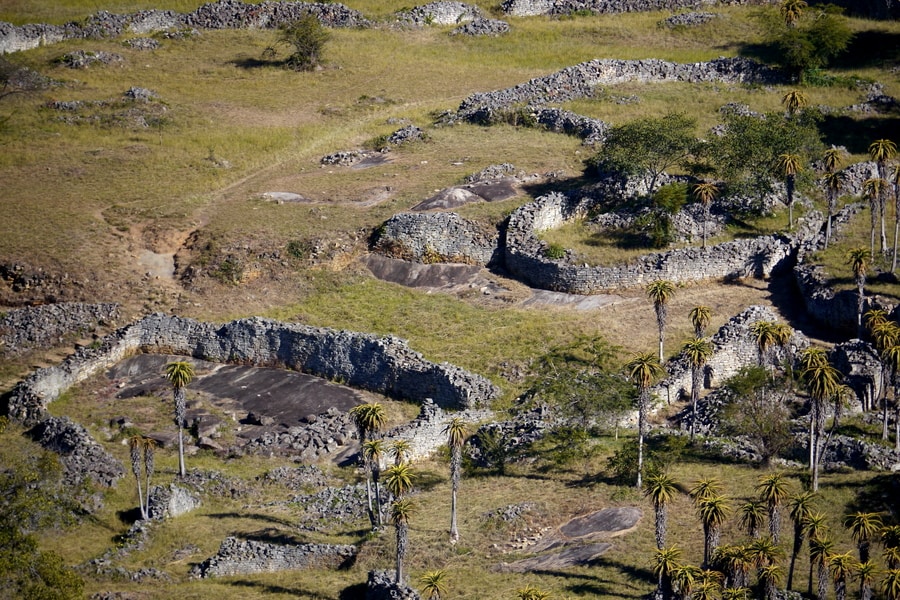
THE HILL COMPLEX
The Hill Complex is beautiful. It is the oldest area of Great Zimbabwe and its construction began around the year 900. The Hill Complex was formerly referred to as the Acropolis and it was the spiritual and religious center of the city. It sits perched atop a rocky outcrop and overlooks the verdant valleys and peaks of the surrounding highlands. Its stone walls have a somewhat warped feel, as they incorporate the surrounding boulders into their design.
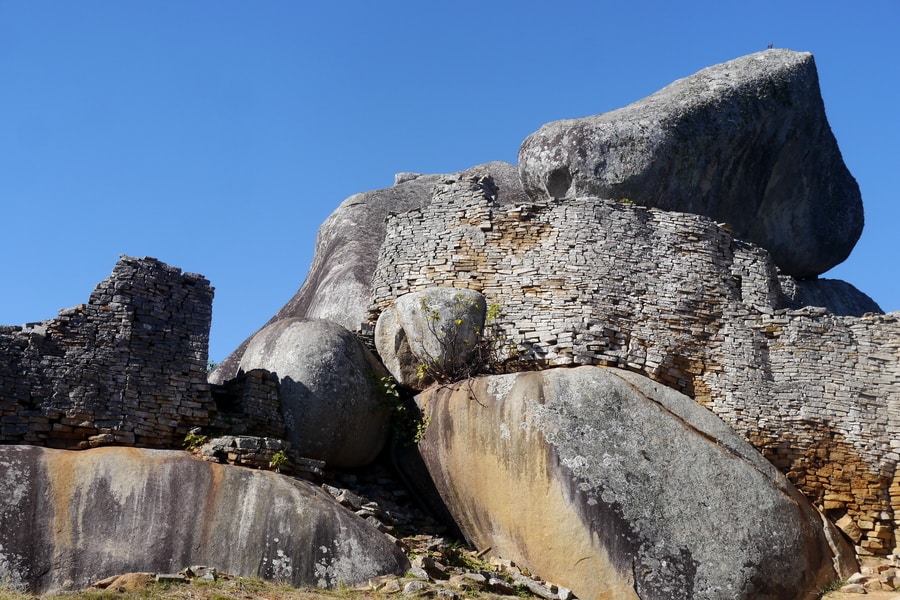
We walked around the maze-like passages of the Hill Complex, taking in the surrounding views and crawling through passageways and over rocky outcrops.
I climbed to the top of the Hill Complex and sat on a boulder that provided me with spectacular sweeping views of the scenery. Perched upon my rock, I could see the Great Enclosure and Valley Ruins below.
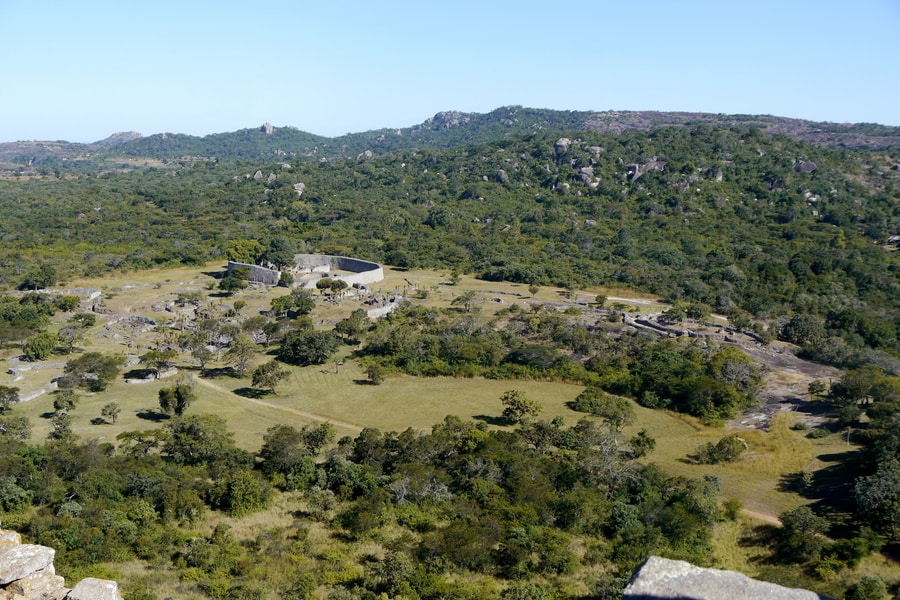
The view was awe-inspiring and beautiful. Were it not for the fact that the sun was beginning to set, I would have likely sat overlooking the valley for hours.
THE GREAT ENCLOSURE
While the Hill Complex is beautiful architecturally and provides a stunning panorama, the Great Enclosure is impressive in its magnitude and engineering. It is the largest single ancient structure South of the Giza Pyramids and has stood the test of time despite the fact that every slab of stone has been stacked without mortar.
The mortar-less walls are a feature that is unique to Great Zimbabwe. It is baffling that, centuries after the construction of the city, they remain largely intact.
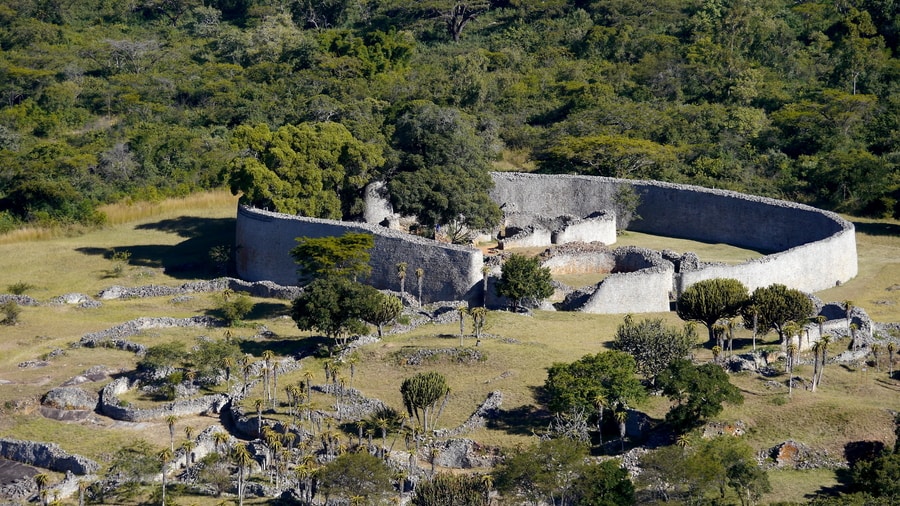
The Great Enclosure is a walled, circular area below the Hill Complex. It dates back to the 14th century and is perhaps the most impressive relic of the archaeological site. The Great Enclosure’s walls measure nearly 10 meters high in places. Its circumference is roughly 250 meters.
We wandered around the various chambers of the structure and admired the narrow passage and conical tower. By walking through the ruins, it was evident that they were once the seat of a great civilization.
In its heyday, Great Zimbabwe may have had as many as 18,000 residents.
THE VALLEY RUINS
The Valley Ruins are a series of living ensembles scattered throughout the valley. They are much newer than the Hill Complex and Great Enclosure. Archeologists estimate that they date back to the 19th century.
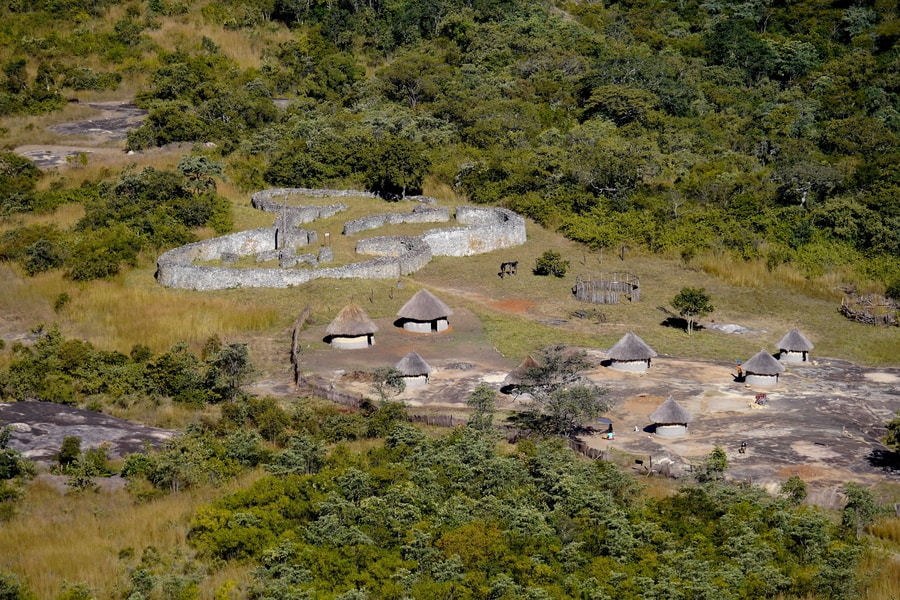
The Valley Ruins, located between the Hill Complex and the Great Enclosure, include a large number of mud-brick houses.
WHO BUILT THE GREAT ZIMBABWE RUINS?
Following Karl Mauch’s “discovery” of the ruins, people began abandoning the theory that the ancient stone structures represented the capital of the Queen of Sheba. Instead, they attributed the construction of the ruins to different groups of Europeans.
Because of its sophistication and skilled masonry, many Europeans were reluctant to credit indigenous Africans with building Great Zimbabwe, so they erroneously attributed the ruins to ancient civilizations such as the Greeks, Egyptians and Phoenicians. Some believed that the Portuguese constructed the site shortly after they began to settle the continent and still others credited Arab and Chinese traders who made their way inland from the Swahili Coast.
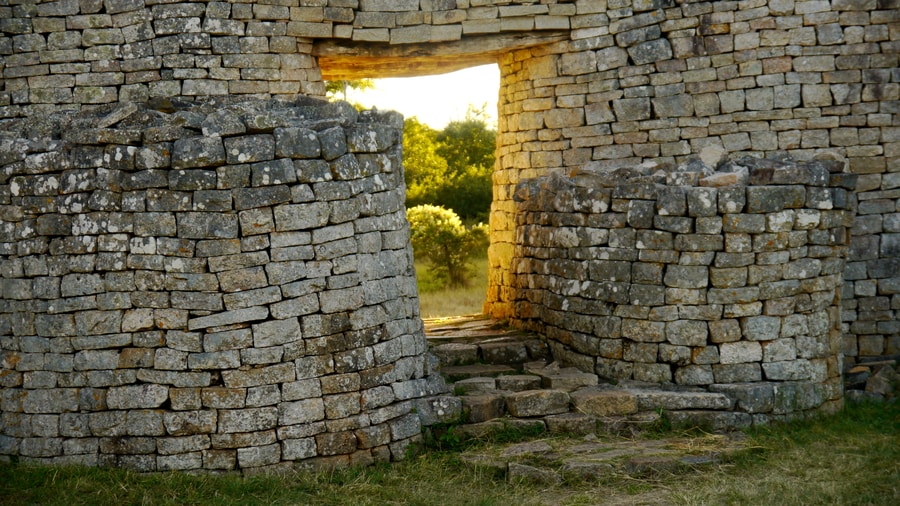
Yet, archaeological evidence reveals that Great Zimbabwe was, indeed, constructed by indigenous Black Africans. It refutes that Great Zimbabwe has European or Caucasian roots and indicates that a powerful civilization once laid claim to Africa’s largest archaeological structures.
Evidence also suggests that the city was once the center of a complex trade network that extended along the East African Coast to the Middle East and as far as China. Though the exact origins of the site are unclear and nobody can say for sure which ethnic group it belongs to, archaeological findings point to a sophisticated society that was all but isolated from Europe and Asia.
THE MODERN IMPORTANCE OF GREAT ZIMBABWE
Whatever the origins of the Great Zimbabwe ruins, the site has been a source of pride for a country that has tried to exert its own identity despite historical occupation and current economic hardship. To black nationalist groups within the country, Great Zimbabwe became an important symbol of achievement during the liberation struggle, for it dispelled the common misconception that blacks were somewhat less advanced than whites socially and culturally.
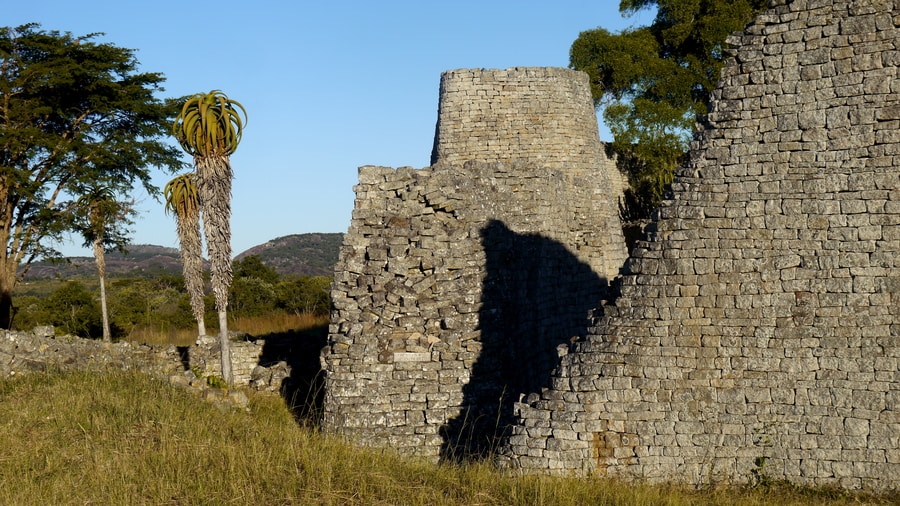
Many believe the word “Zimbabwe” is a contraction of the phrase dzimba dza mabwe–which in Shona means “house of stone.” It was the name given to Rhodesia post-independence and it alludes to the great stone relics that litter the countryside. The country’s flag and coat of arms incorporate a depiction of one of the soapstone bird carvings that has been uncovered at the site.
****
It was a surreal feeling walking through such a grand and mysterious monument and realizing that my friends and I were the only tourists aside from a local Zimbabwean family. Though I relished the feeling of having the ruins to myself, I was puzzled by Great Zimbabwe’s anonymity. How could such a wonderful archaeological treasure be so overlooked? How is it that so few people have even heard of Great Zimbabwe, let alone visited it? I felt lucky to have visited the ruins, but simultaneously saddened by the fact that such a wonderful place does not receive the attention it deserves. Even our Lonely Planet guide grossly underestimated theUNESCO World Heritage Site’s importance and grandeur.
Many of the details and questions surrounding Great Zimbabwe have been lost over time. Yet, though it is unfortunate that so many questions will likely remain unanswered, I found that the shroud of mystery hanging over the archaeological site is part of what makes the place so intriguing in the first place.
_____________________________________
Did You Enjoy this Guide to the Ruins of Great Zimbabwe? Pin It!
